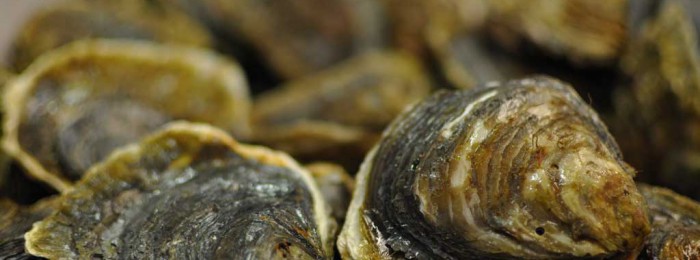01843 585310
info@kentandessex-ifca.gov.uk

01843 585310
info@kentandessex-ifca.gov.uk

Ostrea edulis The native oyster is an asymmetric bivalve mollusc which has a round-oval to pear shaped shell with a rough scaly external surface. The left valve is concave and usually fixed to the substratum while the right valve is flatter and sits inside the left valve as a lid.
The native oyster is capable of growing to over 200 mm shell length and living over 20 years in some parts of the species range which includes coastal areas up to 80 m depth across most of Europe. The native oyster changes sex twice in a season from male to female. Eggs produced are stored in the mantle cavity and gills while sperm are expelled into the water column to be drawn in with water inhaled for feeding and respiration.
Fertilised eggs are retained by the female until development to a free swimming larval stage capable of survive in the water column. After further development and metamorphosis into spat at 18-40 days old depending on environmental factors, settlement occurs onto appropriate substrates for permanent attachment. Attachment often occurs onto cultch usually consisting of dead and broken bivalve shell but can be other live oysters and hard substrates as well. Growth in the first 1.5 year is rapid before grown rates reduce to a constant until individuals reach 6 years old when it reduces further as they age.
Oysters are sessile filter feeds and therefore act as important cleaners of the water column from organic matter suspended in the water column. This leads to competition with other filter feeders as well as invasive species such as slipper limpets. Predators of settled oysters include starfish and tingles which are an invasive species which attacks oyster spat. Oysters are also susceptible to a number of parasites and viruses which have caused population crashes in the past.
Successful spat falls have historically been dependant on a number of environmental factors including temperature and salinity as well as favourable settlement sites for spat.
© Kent & Essex IFCA 2026 - All Rights Reserved | Privacy Policy